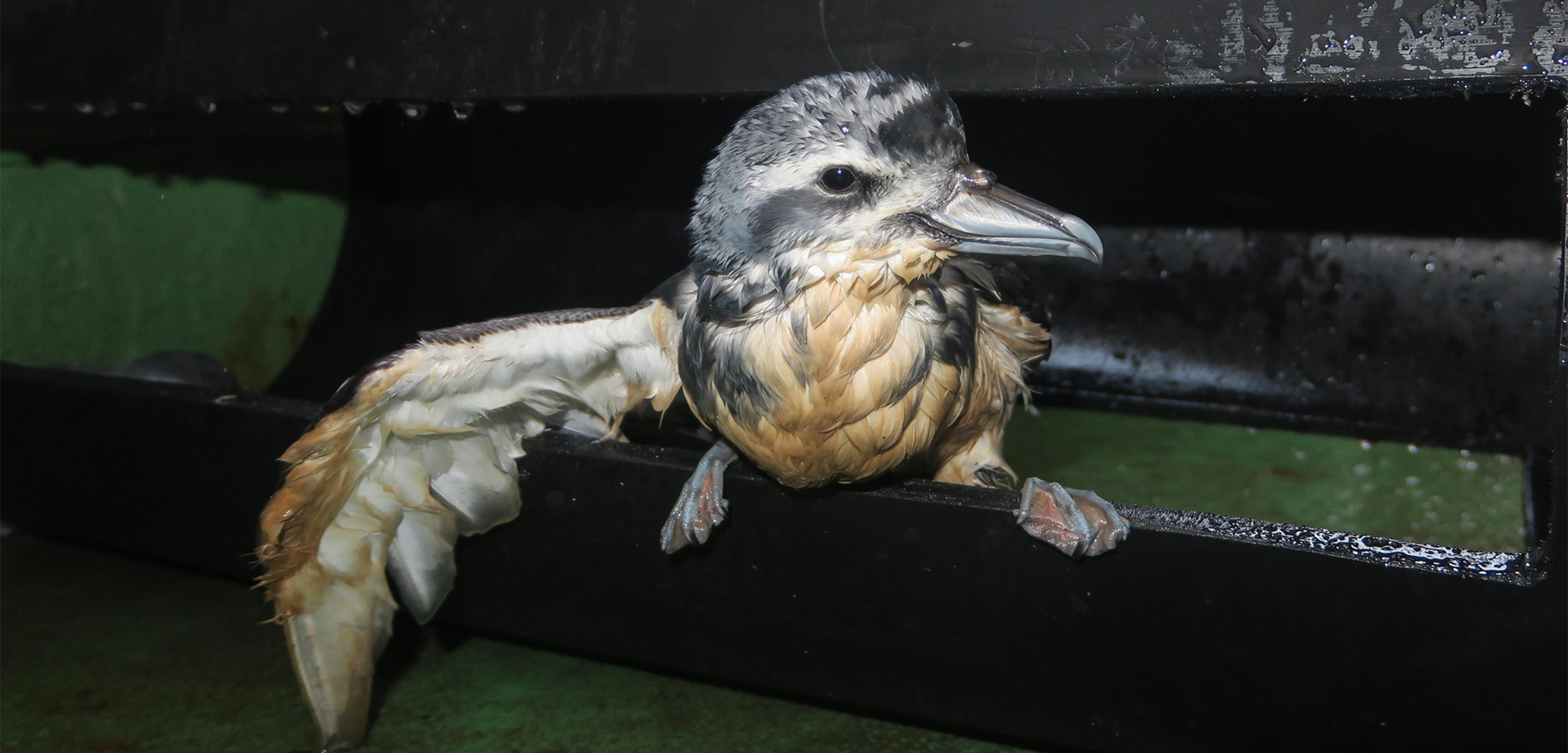Light from Ships Disorients, and Even Kills, Seabirds
Some of the most remote islands in the world provide habitat for large seabird colonies. But even these remote places aren’t safe from light pollution.
Article body copy
Scientists have known since the 1970s that artificial lights at night pose a problem for seabirds. Trapped in the glow of bright lights shining from streetlights, cars, and buildings close to their breeding colonies, disoriented seabirds fly around until they fall to the ground exhausted, a phenomenon known as grounding. But new research led by Peter Ryan, an ornithologist at the University of Cape Town in South Africa, shows that far out at sea, the light from passing ships can have a similar, sometimes deadly, effect.
Previous research by Ryan in the 1980s showed that spotlights on the deck of a lobster boat in the Tristan da Cunha archipelago, in the remote southern Atlantic Ocean, were grounding hundreds of seabirds on deck each night. Fishers on the vessel—the only large ship in the region’s rock lobster fishery—attempted to curb the groundings by using fewer lights on deck and shielding cabin lights with heavy drapes. More than 20 years later, Ryan and his colleagues set out to determine if these mitigation measures undertaken by the Tristan rock lobster fishery were effective. Unfortunately, Ryan and his colleagues’ new study shows that though these mitigation measures have had an effect, even this reduced light is grounding large numbers of birds.
Analyzing records collected by observers stationed on the fishing vessel by the local Tristan government from 2013 to 2021, Ryan and his colleagues’ latest paper shows that over this period more than 1,800 birds grounded on the ship. Of these, 70 birds died, likely from head trauma or other injuries caused by colliding with the boat. The rest were released overboard and are presumed to have survived. Shockingly, the vast majority of these groundings—65 percent—happened on just seven nights.

This prion grounded on a ship’s deck and sullied its wing with oily water. Oil can weaken a seabird’s waterproofing. Photo by Peter Ryan
These big grounding events “happen on dark, misty nights when there’s no other light source,” Ryan says. The birds are “drawn in like moths to a candle.”
Martyna Syposz, an ornithologist at the University of Gdańsk in Poland who was not involved with the study, says that many seabirds, such as shearwaters and petrels, are very clumsy on flat surfaces, like a ship’s deck. For these species, taking off from flat ground is nearly impossible. Grounded on a ship, seabirds sometimes crawl into small spaces for protection, like under a lifeboat, where they dehydrate or starve to death if not rescued. If birds fall into oily water on a vessel, Ryan says, their feathers can lose their waterproofing—a disaster for species that dive to catch fish.
Though Ryan’s study only looked at one lobster boat in a remote part of the South Atlantic, the results demonstrate how dangerous ship-based light pollution can be for seabirds. Globally, fishing boats and seabirds congregate where fish are abundant, so brightly lit vessels in these same areas will certainly be problematic, says André Raine, the science director of Archipelago Research and Conservation, a Hawai‘i-based NGO. Cruise ships can also attract seabirds, he adds, like “brightly glowing beacons through the night.”
Unlike many of the other threats faced by seabirds, such as plastic pollution, climate change, habitat loss, and invasive predators, Ryan says that it’s fairly easy to do something about light pollution.
Raine agrees: with light pollution on land or at sea, “you can actually deal with it in a cost-effective and safe way.” Shielding lights with blinds, using warmer lights (with more red hues), and installing motion-triggered lights can reduce seabirds’ attraction to their harmful glow. The easiest and most effective solution, adds Syposz, is to just keep a light off if you don’t need it.

